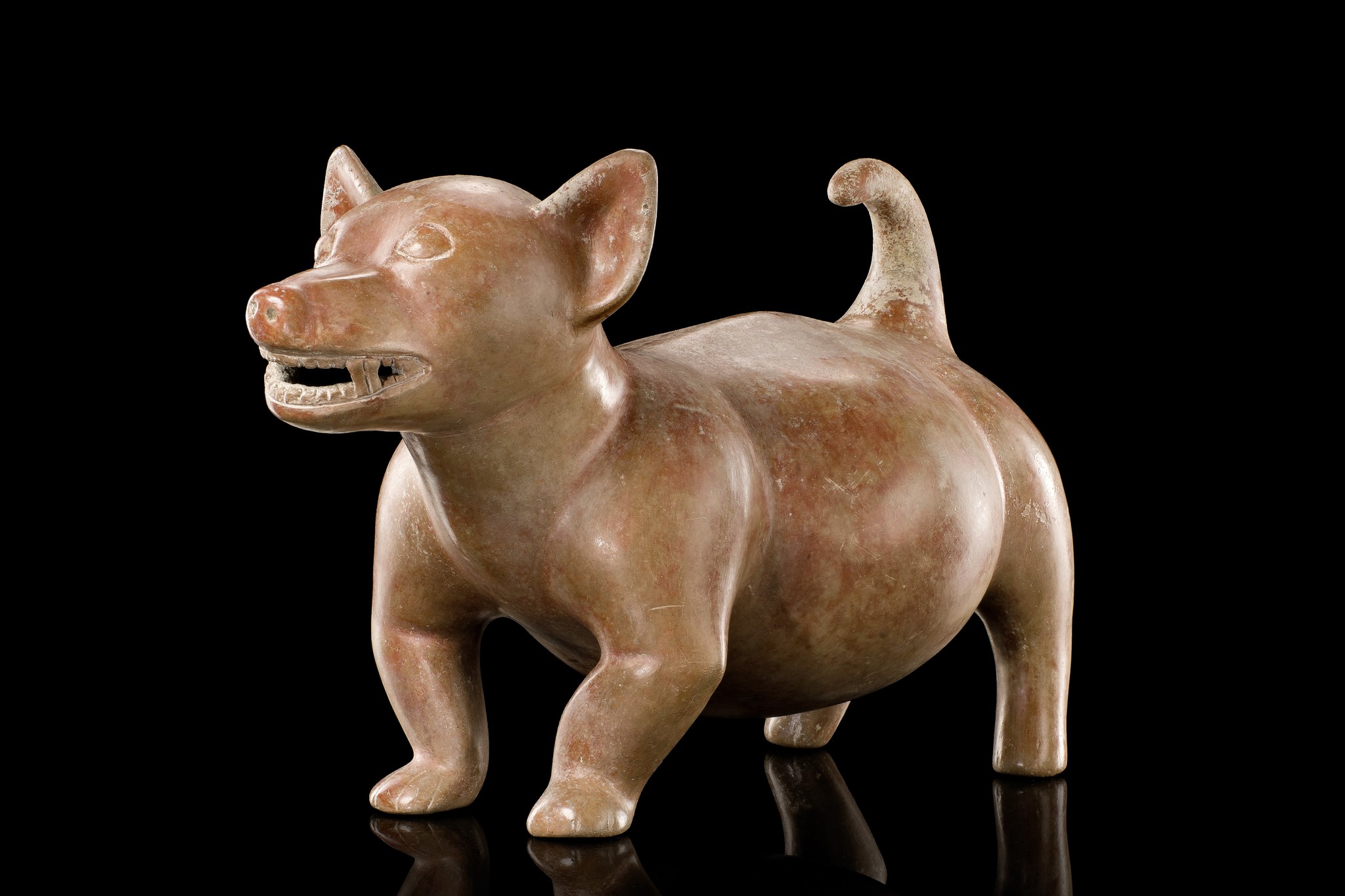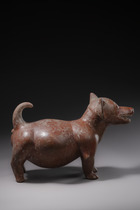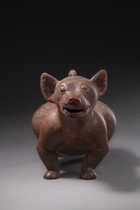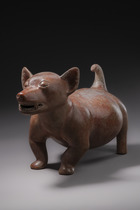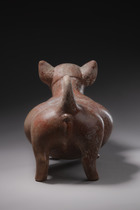Colima Dog, ca. 200 BC - 300 AD · Mexico, Colima · ID: 3052460
Rick & Elinor Clinon, Tulsa, USA
Zemanek-Münster, Würzburg, Germany, 5 March 2011, lot 64
A. & B. Schirmer, Berlin, Germany
Description
ceramic,
Archaeological records indicate that domesticated dogs have lived in the southwestern region of Mexico for at least 3,000 years. Ceramic effigies, or representations, of Xoloitzcuintle, more commonly referred to as Xolo, or Mexican Hairless, have been found across the region.
Dogs played an important role for indigenous people in this region. Not only did they provide an opportunity for food, but they also served spiritually as a part of ceremonial and religious life. In some cultures, Xolos were buried with their human companions to act as guides to the afterlife, or underworld.
The object Colima Dog, ca. 200 BC - 300 AD with the object ID 3052460 was last part of the auction Auction 105 at November 15, 2025 on Zemanek-Münster Auction house. The object with the lot number 45 achieved a sales price of EUR 2,500.
Notices
This object is subject to the UNESCO Cultural Heritage Protection Act. Export documents are required for export (subjected to a fee).

